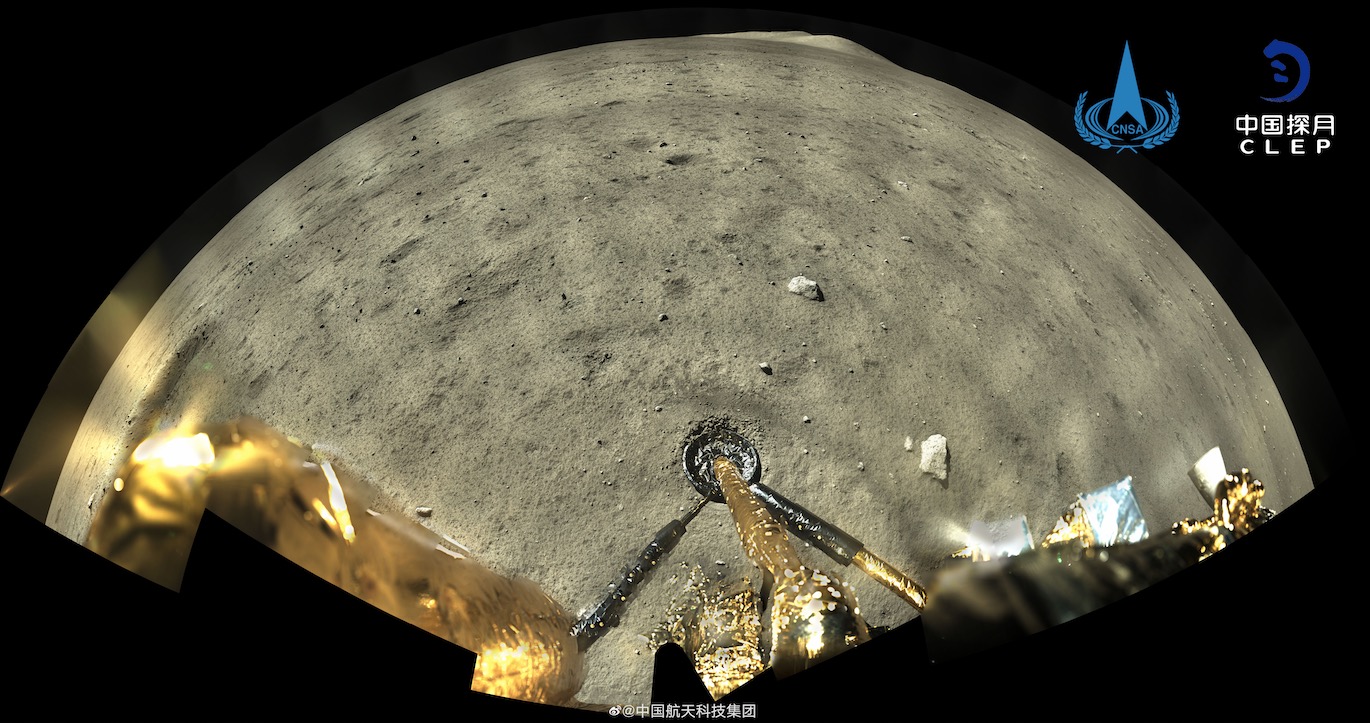China's Chang'e 5 moon landing site finally has a name
Meet Station Tianhe.

The landing site for China's complex Chang'e 5 moon sample and return mission now has a name: Statio Tianchuan.
Statio means a post or station in Latin and is also used in the formal name for NASA's Apollo 11 landing site, Statio Tranquillitatis; and Statio Tianhe, China's Chang’e 4 landing site on the far side of the moon. Tianchuan comes from a Chinese constellation name, which means ship sailing in the Milky Way. Tianchuan consists of nine bright stars in eastern part of the constellation Perseus.
The name was approved in May by the International Astronomical Union (IAU), which oversees all formal names for features in space and on solar system bodies.
Related: China On the Moon! A History of Chinese Lunar Missions in Pictures
Chang'e 5 landed at 43.06 degrees north, 51.92 degrees west on the lunar surface near Mons Rümker in Oceanus Procellarum, located in the northwest of the near side of the moon, on Dec. 1, 2020. The spacecraft collected 3.82 lbs. (1.73 kilograms) of lunar sample material and delivered those samples to Earth on Dec. 16.
Near this landing site are a group of 7 topographical features that have also now received names. These include the peaks Mons Hua and Mons Heng and craters Pei Xiu, Shen Kuo, Liu Hui, Song Yingxing and Xu Guangqi.
Mons Hua and Mons Heng are named after mountains in China, with mons being Latin for mountain. The craters are named for a number of Chinese astronomers, scientists and mathematicians from the past 1,800 years.
Get the Space.com Newsletter
Breaking space news, the latest updates on rocket launches, skywatching events and more!
These features are all marked in a map in the Gazetteer of Planetary Nomenclature.
Related: The latest news about China's space program
Meanwhile on Earth, the Chang'e 5 samples are set to be analyzed. A portion of the samples have been made available for loan to institutions in China, with international applications also to be considered.
And the Chang'e 5 orbiter which helped deliver the samples is now carrying out tests and returning eerie images from a point in space known as Sun-Earth Lagrange point 1.
Follow us on Twitter @Spacedotcom and on Facebook.
Join our Space Forums to keep talking space on the latest missions, night sky and more! And if you have a news tip, correction or comment, let us know at: community@space.com.

Andrew is a freelance space journalist with a focus on reporting on China's rapidly growing space sector. He began writing for Space.com in 2019 and writes for SpaceNews, IEEE Spectrum, National Geographic, Sky & Telescope, New Scientist and others. Andrew first caught the space bug when, as a youngster, he saw Voyager images of other worlds in our solar system for the first time. Away from space, Andrew enjoys trail running in the forests of Finland. You can follow him on Twitter @AJ_FI.









